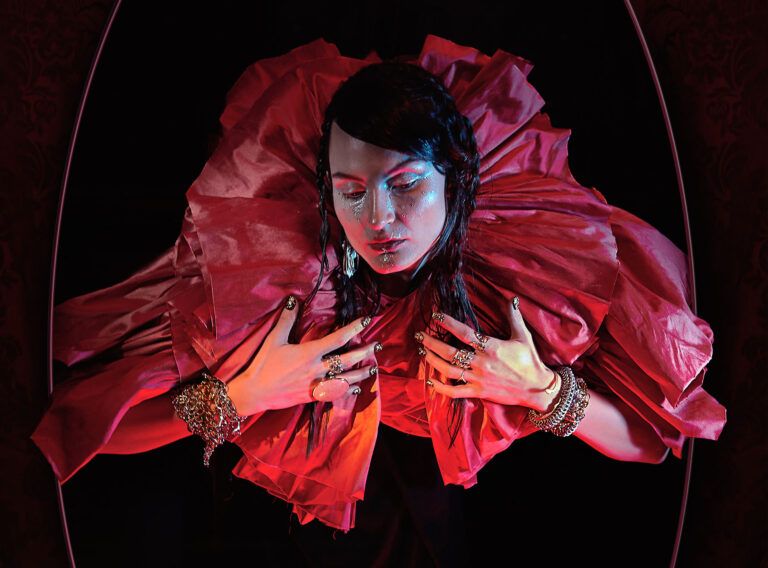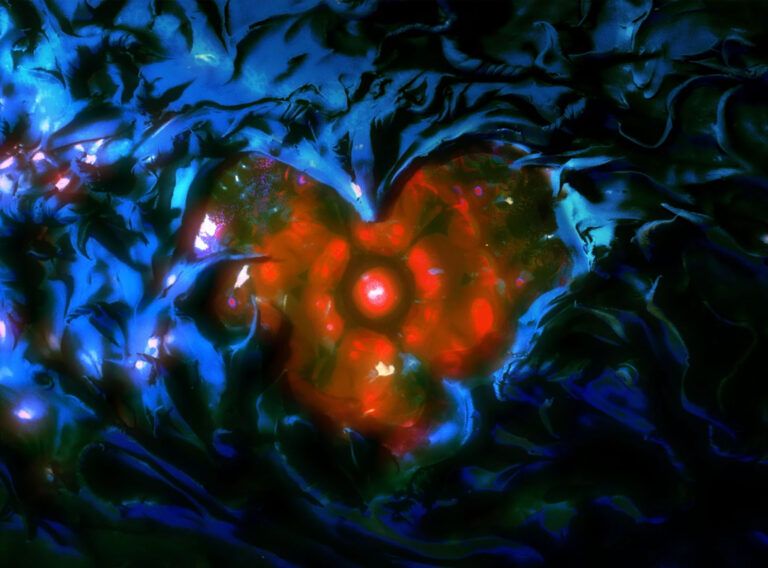The night before creating my first crop top was preceded by a day of pondering the mask with which I would cover my face. The act of revealing the belly and accepting an aspect of clothing conventionally considered feminine, was preceded by hiding the face. While the belly is a vulnerable spot, holding the proof of our cut-off from the innocent state of latent existence and the possibility for a human existence to be created, the face itself is a mask. The face equals ambivalence; sometimes it deliberately hides the substantial, dissimulates, and sometimes, contrary to the wishes of its owner, it shows the inner and the genuine. By putting on a new mask, we hide this ambivalence from others but also from ourselves. As soon as we subconsciously perceive that others cease to see us in our own discrepancy of the absence, the discrepancy disappears from our very selves – it’s temporarily forgotten. One of the aspects of creating an identity is projecting ourselves onto the world – the gaze upon others is a subconscious gaze into a mirror. Four eyes and the intimate zone they enclose traces an arch leading from us to another only to bounce back – and change us.
So, in order for me to wear a crop top, I needed to disappear; the partial and illusory covering of the face enabled me to find a crevice in the landscape of my own identity and fill it. The subconscious desire for acceptance of the new, conventionally feminine this time, mostly signifies a certain absence. We’re always incomplete and we seek to complete ourselves in others. This equilibrium is fluid and fragile. Since we feel our own absence, we disappear into others in order to emerge back in ourselves – with the temporary illusion of being complete again. However, these processes are hard to follow and to acknowledge. They function within the plane of the subconscious and the intuitive. They’re always preceded by a layer of conscious thought, oftentimes contradictory. By putting on the crop top, I’ve disappeared from the field of the natural, to forget about the deeply-rooted idea that what’s natural is permanent and we should adhere to it. In reality, the natural is just another construct. Surely, we can perceive the primal state of natural things but that too becomes an immediate subject of interpretation and context; it turns into the selected and the accepted. And that is why there exists no such thing as a natural identity or, subsequently, gender. We ourselves invent them and as often as we want. This invention mirrors the process of absence – disappearance – temporary emergence.
Because identity is ceaselessly reinvented or found again, one could say that it can have a character of a flowing river, a fluid identity then, or of a chain of constantly alternating and separate identities, which differ in the same way film frames do. They’re only slightly different but still convey the illusion of a motion, which unfolds in a certain direction. The comparison to a film reel is close-fitting for another reason. The changes in the story and rhythm of a movie are most often connected with a cut – the same as in my case the change was accepted through the act of cutting off. The creation and putting on of the crop top didn’t therefore manifest the change through an interpersonal relationship with a specific person, but through the relation between me and a symbol of conventional and superficial femininity or, more broadly, between me and gender.
For now, the talk was revolving around abstract terms. But crop top and its creation illustrates the described process even materially. It’s both a surface and a mind map. It starts out as a complete piece of garment, a T-shirt in its original form. Of course, even the T-shirt has a covering function – it will always represent some hidden absence. To realize the true function of a garment, to cover an absence, means the possibility to disappear into a new emergence through this absence. By cutting off the lower half of the T-shirt, we admit to the absence and we disappear. As a person of a male sex, I’ve vanished from the conventionally constructed naturalness and revealed my belly, perceived as a symbol of superficial femininity in the first layer and as an interpretation of this surface as an acceptance of vulnerability in the second layer. Vulnerability is then perceived as an exposed sensitivity, traditionally connected to the feminine aspect that I suggest as a constructed value here, which should, opposed to its ‘nature’ traditionally assigned by the gender binary system, be adopted as natural and normative. Actually, the act of creating a crop top has nothing in common with the feminine – we would have to side with the black-and-white gender binarism. On a symbolic level, the crop top represents the acceptance of a certain characteristic and a role, which is traditionally linked to the feminine but should be universal instead. In my opinion, this process can be found not only in the private but also the public sphere. The inventing of temporary identities is a political tool.
One question still stands: what role does the mask play? The answer is probably that the normatively perceived binary nature, existing either in surface features (clothing) or deep-rooted psychology, prevents us from realizing the missing parts of this model that, on one hand, proclaims its unity and completeness, and on the other its rigidity prevents the full and free inventing of new inherent and constructed natures. By putting on a mask, we forget ourselves in the relation with our very selves and others, which allow us to go missing, to disappear from ourselves in order to emerge temporarily complete. The primary impulse as therefore the possibility of estrangement and its positive interpretation.
Article & Photo / Fluid Identity Club




